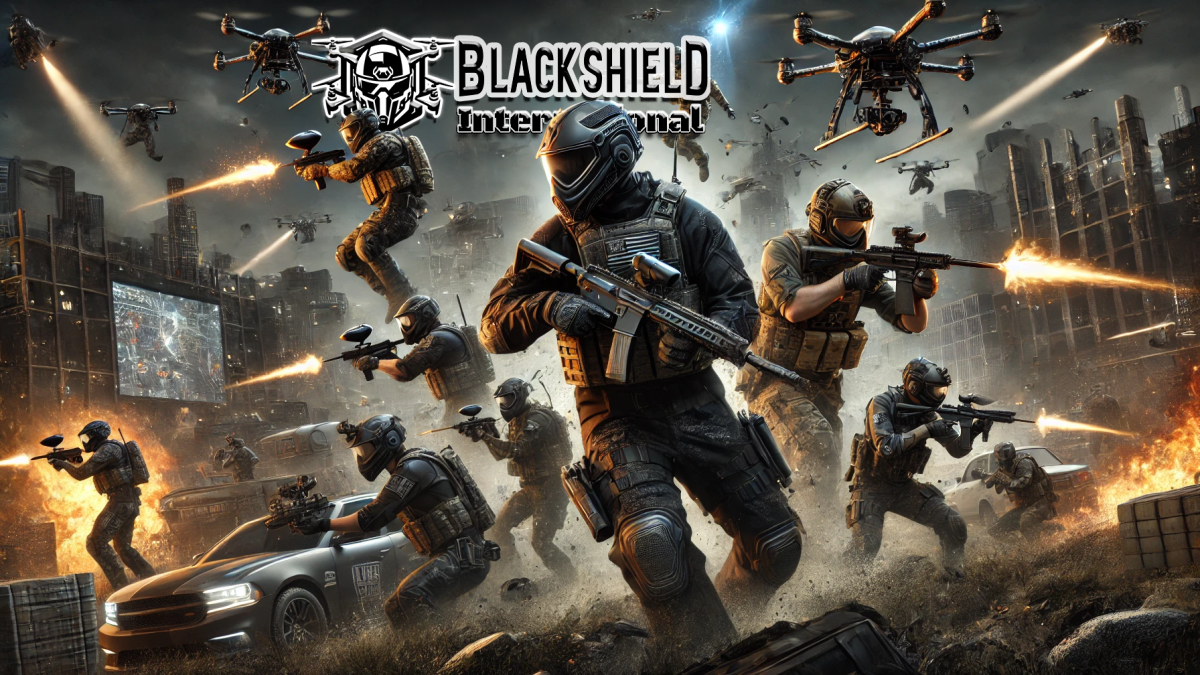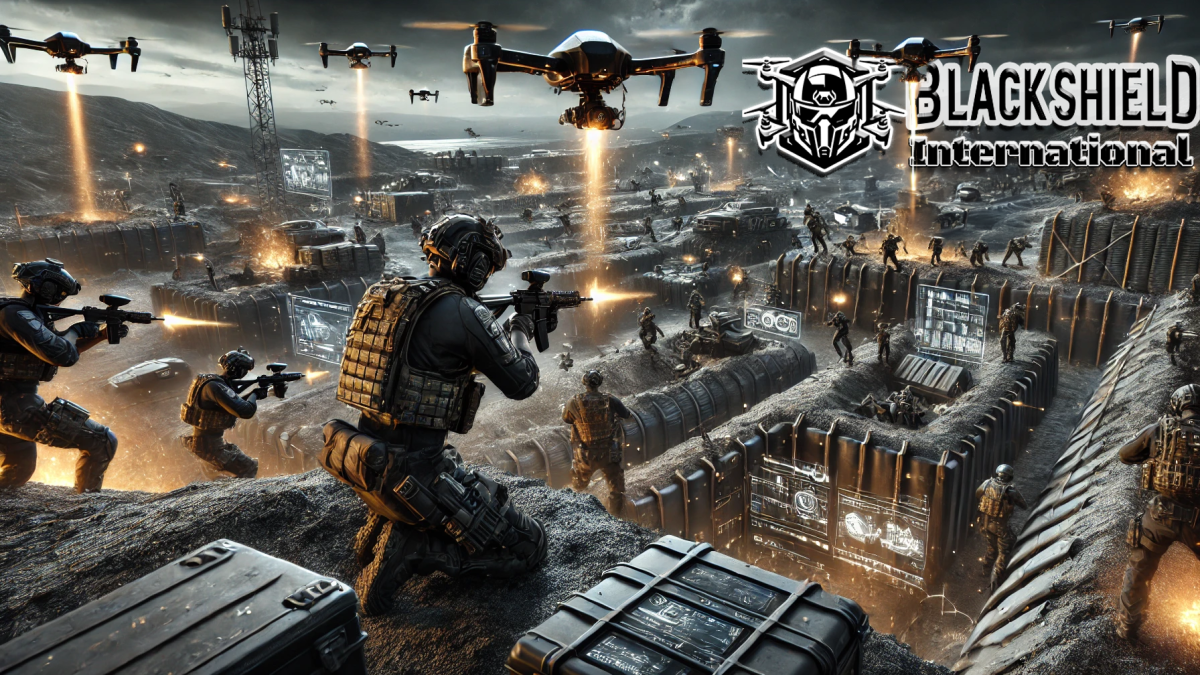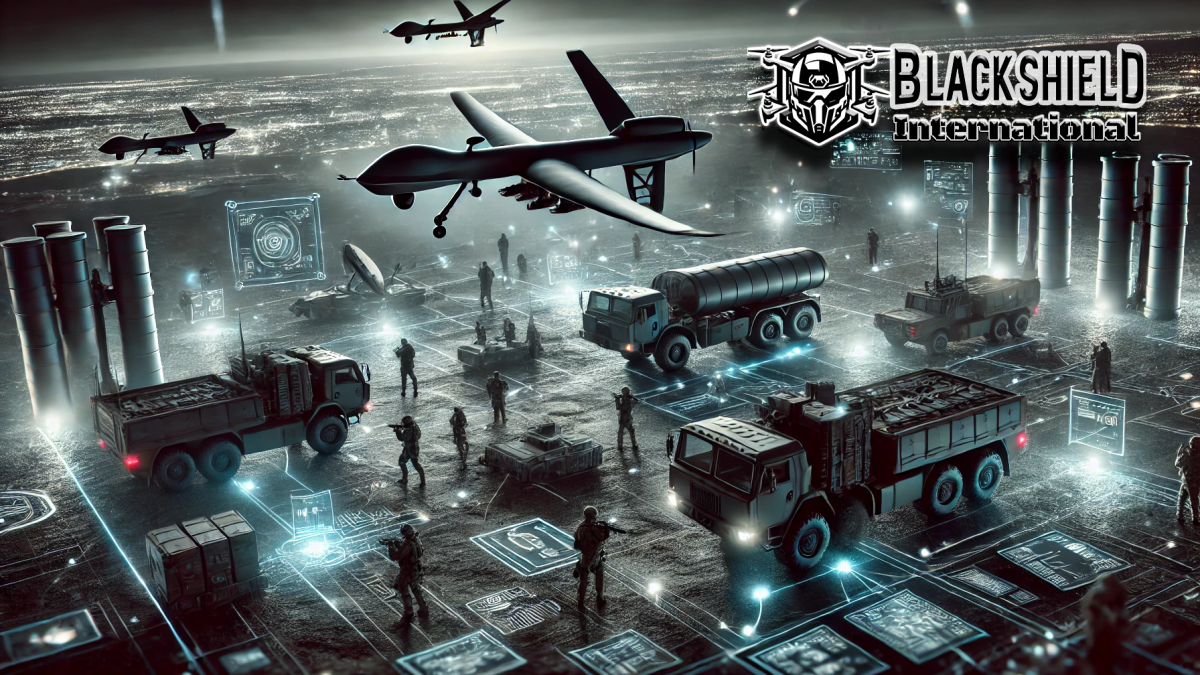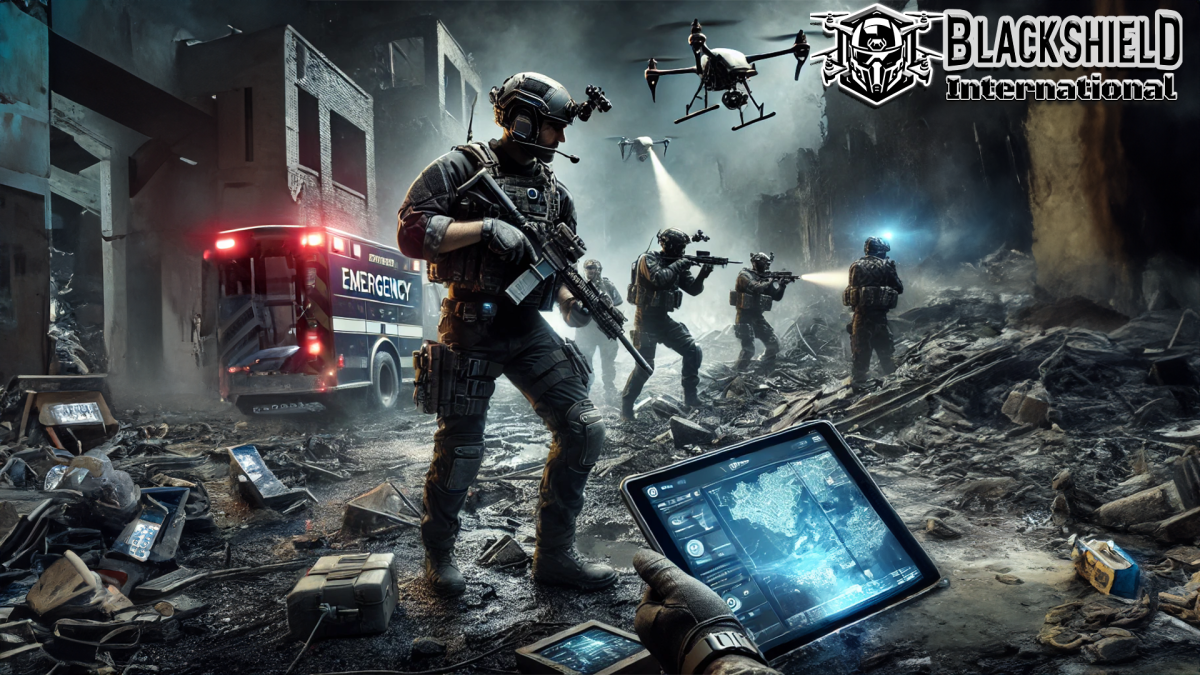Introduction and Contextual Background
In tracing the trajectory of warfare throughout history, one is struck by the continual evolution and transformation of combat tactics and technology. From the first ancient battles fought with sticks and stones to the medieval introduction of gunpowder, to the modern era’s cyber and drone warfare, the face of conflict has constantly changed. Today, as we stand on the brink of a new era, we see an impending shift in the nature of warfare itself, brought on by rapid advancements in technology and changing geopolitical dynamics.
The context of modern warfare has drastically changed since the end of the Cold War, influenced by a range of factors from globalization and technological progress to the changing nature of threats and the evolving geopolitical landscape. In recent decades, the technological element has come to dominate, revolutionizing warfare to an extent arguably greater than any prior era.
The American military strategy has been a central element in shaping this transformation. As one of the world’s leading military powers, the U.S. has pioneered advancements in warfare technology and tactics. From the shock and awe tactics of the Gulf War to the present-day drone operations, the U.S. has often been at the forefront of employing innovative approaches in combat.
Historically, the American way of war, defined by overwhelming force and a preference for large-scale operations, has proven successful. The American military might, propelled by its technological superiority and massive resources, has demonstrated its capacity to decisively win battles and wars. However, as the technological landscape evolves and new players emerge on the global stage, there’s growing concern that these traditional tactics may not suffice in the future.
The rise of China as a potential peer competitor, the resurgence of Russia, the persistent threat from non-state actors, and the changing nature of threats – such as cyber-attacks and hybrid warfare – all contribute to the shifting landscape. The United States, like other nations, is grappling with these new realities, endeavoring to adapt its military strategy to the rapidly changing environment.
The rapid advancements in technologies like artificial intelligence (AI), unmanned systems, cyber capabilities, and space-based assets are revolutionizing warfare. On one hand, they offer unprecedented capabilities in terms of precision, speed, and the ability to wage war from a distance. On the other hand, they also pose new challenges and vulnerabilities.
This intertwining of technology and warfare is reshaping the strategic landscape. Defensive systems with long-range strike capabilities are becoming increasingly critical. A shift towards defensive warfare, characterized by multi-layered defenses, long-range precision strikes, and high-tech ISR-S systems, appears imminent.
This trend, while raising new strategic and operational challenges, also presents a myriad of geopolitical implications. As the balance of power potentially shifts towards those possessing superior defensive and standoff capabilities, international relations are bound to be impacted. The traditional American military strategy of overwhelming offensive force may become less viable, leading to potential shifts in global alliances, threat perceptions, and security strategies.
The potential for this transformation warrants a thorough exploration of the contemporary state of warfare technologies and tactics, with a specific focus on the increasing prominence of defensive systems and ISR-S capabilities. Additionally, understanding the evolving American military strategy in this context is crucial, as it has significant implications for global security and international relations. As we delve deeper into this topic, we will draw upon relevant theories of warfare, the impact of technological advances, and the broader geopolitical implications.
Understanding Defensive Warfare
Defensive warfare, as a military strategy, has evolved significantly over the centuries. Historically, defense has been a crucial part of warfare, as evidenced by fortresses, castles, and city walls. The axiom “the best defense is a good offense” was not always applicable. In many historical cases, a well-planned defense was a more viable and effective strategy. To understand this aspect of warfare, one must delve into the foundations of defensive strategy and its progression over time.
The principles of defensive warfare are rooted in the maxim of Sun Tzu’s “The Art of War,” which states, “The supreme art of war is to subdue the enemy without fighting.” A defensive strategy is designed to repel an attacking force, utilizing terrain, fortifications, and other advantages to negate the enemy’s offensive capabilities and momentum.
An epitome of this principle is the Battle of Thermopylae in 480 B.C., where a significantly smaller Greek force held off the massive Persian army by using the narrow pass’s terrain advantage. Similarly, during World War I, the Gallipoli Campaign saw the Ottoman Empire successfully repelling the Allied forces, using their understanding of the terrain and fortified defenses to their advantage.
The advancement of technology, particularly from the 20th century onwards, has profoundly influenced defensive warfare. The advent of long-range artillery and aircraft brought a new dimension to defense strategies, with countries developing advanced air defenses and anti-ship systems. In more recent times, the introduction of precision-guided munitions and missile defense systems has further enhanced defensive capabilities.
In the current context, defensive warfare is undergoing another transformation due to the rapid technological advancements in the fields of AI, cyber capabilities, unmanned systems, and long-range precision weaponry. Long-range precision weapons have become a cornerstone of defensive strategy, enabling forces to strike targets at a distance, thereby denying the enemy the opportunity to reach their defensive lines.
The revolution in military affairs (RMA), characterized by the integration of advanced technology into military operations, has also contributed to the development of ISR (Intelligence, Surveillance, and Reconnaissance) capabilities. Today, ISR has become a vital element of defensive warfare. Armed forces use satellites, unmanned aerial vehicles (UAVs), and AI-enabled systems for collecting, processing, and disseminating intelligence, enhancing their ability to detect, track, and engage threats.
Contemporary warfare has seen an increase in the use of defensive systems like missile defenses, electronic warfare, and cyber defenses. For instance, Israel’s Iron Dome missile defense system demonstrates how technology can effectively neutralize incoming threats. Similarly, cyber defenses are being strengthened worldwide to protect against cyber-attacks that can potentially cripple a nation’s military infrastructure.
Moreover, advanced ISR capabilities facilitate more effective decision-making in defense. The development of ISR systems that include AI and machine learning algorithms is helping to process vast amounts of data, detect threats more accurately, and enable quicker response times. These capabilities enhance a nation’s ability to protect its assets and maintain situational awareness, a crucial component of defensive warfare.
The shift towards a more defense-dominant warfare strategy, characterized by layered defenses, precision strikes, and enhanced ISR capabilities, is clearly visible in the modern military landscape. With advancements in technology and changes in the geopolitical environment, this trend is likely to continue and reshape future warfare. It is essential to keep pace with these changes and understand the implications of this transformation in the context of global security and international relations.
ISR-S Systems and Modern Warfare
In today’s era of modern warfare, a nation’s military strength is no longer solely determined by the size of its forces or the quantity of its weaponry. Rather, it’s the quality of its intelligence and surveillance capabilities that often decide the outcome of conflicts. In this context, the role of Intelligence, Surveillance, Reconnaissance, and Strike (ISR-S) systems has become crucial.
ISR-S systems encompass a variety of technologies and methods used for gathering and analyzing information, providing comprehensive situational awareness, and enabling precise strikes. They span across multiple domains, including space, air, land, sea, and cyberspace. These systems work in unison to monitor activities, gather intelligence, analyze data, and, when required, strike targets with high precision.
The core components of ISR-S systems typically include satellites, manned and unmanned aircraft, ground stations, and data processing centers. Satellites and aircraft equipped with advanced sensors and imaging technology capture high-resolution images and signals, allowing for real-time tracking and monitoring of activities. Ground stations receive this raw data and forward it to data processing centers, where advanced algorithms, often aided by artificial intelligence, analyze the information. This information is then disseminated to commanders, who use it for decision-making and, if necessary, targeting.
The strategic significance of ISR-S systems is immense. With these systems, military forces can monitor enemy activities, detect threats early, make informed decisions, and execute precision strikes, all while minimizing the risk to their own forces. ISR-S systems also provide the flexibility to adapt to changing scenarios and respond rapidly to emerging threats, an attribute that is essential in the volatile environment of modern warfare.
Comparatively, different nations have varied capabilities and approaches when it comes to ISR-S systems. The United States, for example, has invested heavily in its ISR capabilities and operates a sophisticated network of satellites, aircraft, drones, and ground stations. The U.S. military also makes extensive use of AI and machine learning algorithms to analyze the vast amounts of data collected by its ISR assets.
Similarly, China has been rapidly advancing its ISR capabilities, focusing on integrating its ISR systems with its strike capabilities to form a comprehensive ISR-S network. China’s development of anti-satellite weapons and cyber warfare capabilities indicate its intention to disrupt the ISR-S systems of potential adversaries.
Meanwhile, Russia has prioritized the modernization of its electronic warfare capabilities, aiming to interfere with the communication and navigation systems of its adversaries, thereby affecting their ISR-S capabilities.
The increasing reliance on ISR-S systems has significantly impacted global power dynamics. Nations with advanced ISR-S capabilities possess a significant strategic advantage, as these systems allow for effective threat detection and response, thereby enhancing deterrence and defensive capabilities. Conversely, nations with less developed ISR-S capabilities may find themselves at a strategic disadvantage, vulnerable to surprise attacks, and unable to respond effectively to emerging threats.
The rise of ISR-S systems has also led to an increase in space and cyber warfare, as nations strive to protect their own ISR-S systems while attempting to disrupt those of their adversaries. As a result, the contest for control over the ultimate high ground – space – and the realm of cyberspace has become a prominent feature of modern warfare.
Given these factors, the future of warfare is likely to be significantly influenced by the continued development and utilization of ISR-S systems. As these systems become more integrated and sophisticated, they will undoubtedly shape the strategies and tactics of modern warfare, potentially leading to a future where intelligence and precision strike capabilities take precedence over traditional measures of military power.
Re-Evaluation of the Traditional American Way of War
The traditional American Way of War has long been distinguished by its reliance on overwhelming force, extensive resources, and advanced technology. This model of warfare, molded by the experiences of World War II and solidified during the Cold War era, underscores rapid, decisive victory through superior firepower and technology. Instances from the D-Day landings to the “Shock and Awe” campaign in Iraq have ratified this strategy as a fundamental principle of the U.S. military doctrine.
Nevertheless, in the face of modern warfare’s evolving complexities and technological advancements, this traditional approach encounters substantial challenges and critiques. The emergence of asymmetrical warfare, the global spread of advanced defensive systems, and the introduction of new domains such as cyber and space warfare pose considerable obstacles to these conventional American military strategies.
Asymmetrical warfare, often utilized by non-state actors, exploits the vulnerabilities of conventional military forces. This was witnessed during conflicts like the Vietnam War, and more recently in Iraq and Afghanistan, where despite its superior firepower and technology, the U.S. military grappled against insurgencies, guerrilla warfare, and improvised explosive devices (IEDs). These conflicts highlighted the limitations of an approach rooted in conventional warfare principles in an environment defined by unconventional warfare.
Additionally, the swift global proliferation of advanced defensive systems presents a substantial challenge to the traditional American Way of War. Nations such as Russia and China have invested heavily in developing sophisticated anti-access/area-denial (A2/AD) capabilities, with the explicit aim of restricting U.S. forces’ maneuverability within specific regions. When paired with long-range precision weapons, these systems could potentially counteract the U.S. military’s superiority in air and naval power, significantly limiting its global power projection capabilities.
Moreover, the emergence of cyber and space warfare domains further challenges traditional American warfare strategies. Cyberspace has emerged as a new battleground, with states and non-state actors alike exploiting it to launch attacks on critical infrastructure, disrupt communications, and propagate disinformation. Similarly, space, too, has become a militarized arena, with nations developing anti-satellite weaponry and positioning ISR capabilities in orbit. These new warfare domains necessitate a paradigm shift, requiring strategies and capabilities extending beyond traditional warfare principles.
Beyond these emerging challenges, the traditional American Way of War also faces inherent issues, rooted in its dependence on intensive operations logistics, costly high-tech weaponry, an overabundance of senior leaders, and a perceived lack of experience in peer-to-peer combat. Its heavy reliance on air superiority, coupled with a systemic lack of oversight on costs, has left the U.S. military often sluggish to adapt and vulnerable to budgetary constraints. This has triggered a growing demand for leaner, more sustainable, and flexible military models.
This critique also extends to the American military’s strategic operations, often characterized by ambitious goals but marred by a lack of adequate oversight. Political leadership, often inexperienced in warfare, has been known to engage in conflicts without clearly defined end states. Similarly, the procurement of weapons often lacks systemic integration, hampering unified command efforts. Furthermore, the inadequate understanding of doctrine among leadership and neglect of basic battle drills and tactics further undermines operational effectiveness.
In essence, while the traditional American Way of War carries its merits and has proven effective in certain contexts, it encounters significant challenges in the face of modern warfare’s evolution. This necessitates a thorough re-evaluation of traditional strategies and an evolution towards more adaptable, sustainable, and comprehensive approaches. The future of warfare is likely to necessitate a fusion of conventional and novel strategies, leveraging the strengths of traditional forces while incorporating the flexibility and innovation required to handle asymmetrical warfare, advanced defensive systems, and the specifics of cyber and space warfare.
Future Warfare: Reimagining Trench Warfare with High Technology
As we sail through an era of technological marvels and unforeseen shifts in battle strategies, we find ourselves circling back to an age-old concept – trench warfare. This term, in its evolved state, no longer brings forth visions of soldiers huddled in squalid trenches. Instead, the contemporary interpretation of trench warfare paints a picture of a layered, all-inclusive defense strategy, applying high-technology and improved tactics. It symbolizes a shift from stagnant defenses to dynamic, multi-domain operations. Thus, it appears that future warfare might witness a redefined form of trench warfare, enhanced by advanced ISR-S (intelligence, surveillance, reconnaissance, and strike) systems, mobile defenses, and a renewed focus on artillery, missiles, and standoff weapons.
The principles of the deep battle doctrine, first formulated by the Soviet military, surface as critical factors in visualizing this futuristic, high-tech trench warfare. This doctrine dictates that an offensive force must bypass the enemy’s front-line defenses to strike at their operational depth directly. In the realm of ISR-S and defensive operations, this doctrine would evolve into breaching the enemy’s ISR network, incapacitating their command and control systems, and targeting vital logistical and infrastructure assets. Hence, the deep battle principle essentially endorses a layered defense strategy that disrupts the enemy’s offensive at multiple stages, utilizing a mix of ISR-S systems, standoff weapons, and mobile defenses.
The future battlefield calls for an adjustment of force structures and tactical doctrines, with a heightened emphasis on survivability amidst potent attacks. It demands the deployment of resilient, coordinated defense line breakers and forlorn hopes – expendable elements prepared to endure the enemy’s initial onslaught. In this scenario, the importance of siege-breaking and siege-making comes to the forefront, invoking imagery of medieval warfare.
Indeed, the medieval era offers a relevant analogy, with set-piece battles being uncommon, and sieges being the favored option for their predictability. Similarly, future warfare may emphasize sieges, albeit wrapped in a technologically advanced guise. Advanced ISR capabilities, cyber warfare, precision strikes, and autonomous systems could revolutionize siege warfare. In this setting, skirmishers’ roles could be reprised by unmanned systems and special operations forces, conducting reconnaissance, harassment, and precision strikes.
However, while history offers precious lessons, it should not serve as an unquestioned template. As the introduction of precision-guided munitions, cyber warfare, and autonomous systems has transformed modern battlefields, it’s crucial to adapt these historical lessons to the realities of today, blending the old with the new. This necessitates a systems approach, integrating various technologies, strategies, and tactics into a coherent framework.
This systemic view extends to weaponry’s development and acquisition. The usual pitfall has been the development of technologically advanced weapons systems in isolation, leading to difficulties in integration. Future warfare requires a deviation from this method, advocating for the creation of weapons systems that dovetail into the broader strategy and tactics. Investments running into billions of dollars must undergo meticulous scrutiny to ensure alignment with the overall operational doctrine.
At the heart of this transformation lies the requirement for a unified, unwavering strategic vision, supplemented by decentralized implementation. Field commanders must be given the authority to make decisive actions, adjusting to the rapidly changing battlefield dynamics. This warrants a shift away from bureaucratic stiffness, encouraging a culture of innovation and multifaceted leadership. The military leaders of the future must be adept at mastering the systemic frameworks while possessing the ingenuity to improvise on the spot.
In essence, the future of warfare may see a return to the trenches, albeit reimagined through the prism of high-tech systems and modern tactics. This shift towards layered defenses, amalgamated with a nuanced understanding of historical lessons and a systemic approach to strategy and tactics, will likely set the parameters of high-tech trench warfare. Amid this transformation, the role of visionary, adaptive leadership will be crucial, in navigating the course of conflicts in this new era of warfare.
Conclusion and Implications for Military Strategies
The trajectory of warfare, as we have discussed, is poised to shift dramatically due to emerging technologies and evolving concepts. While certain aspects of warfare echo age-old principles, such as the systemic approach to tactics and the emphasis on layered defenses, they are being reimagined in an entirely new context. This hybrid model, merging high-tech capabilities with established doctrines, could significantly shape the future battlefield. However, the complexity of this transformation, coupled with its profound implications for global security and international relations, necessitates a thoughtful, strategic approach.
In essence, the advent of high-tech trench warfare heralds a return to principles of warfare that emphasize resilience, multi-layered defenses, and the ability to absorb and repel enemy attacks. However, unlike the static defenses of the past, the trench warfare of the future will be characterized by dynamism, adaptability, and the integration of advanced technologies. This fusion of the old and the new, the physical and the digital, the human and the autonomous, could redefine warfare as we know it.
One of the key takeaways from this analysis is the need for a systems approach to warfare. As military operations become more complex and multifaceted, the siloed approach to strategy and tactics will become increasingly untenable. Instead, future military strategies should focus on developing comprehensive frameworks that integrate various elements of warfare, from ISR-S systems to mobile defenses, from standoff weapons to unmanned systems.
In practical terms, this systemic approach necessitates a shift from a weapon-centric to a network-centric perspective. Military investments should not be concentrated solely on the procurement of advanced weapons systems. Instead, they should be spread across a wide range of assets, including ISR capabilities, cyber defenses, logistical systems, and personnel training. Only by viewing these elements as part of an interconnected network can we maximize the effectiveness of each individual component.
Furthermore, the future of warfare will demand greater adaptability, both at the strategic and tactical levels. The increased pace of technological change, coupled with the unpredictable nature of future threats, requires military strategies to be flexible and adaptable. This means that while there should be a unified, overarching vision guiding military operations, the execution of these operations should be decentralized, empowering commanders on the ground to make decisions based on the rapidly evolving battlefield dynamics.
Yet, perhaps the most profound implication of high-tech trench warfare lies in its potential impact on international relations and global security. As countries around the world seek to bolster their defenses and gain a technological edge, the balance of power could shift dramatically. This could lead to a new arms race, not of nuclear weapons, but of advanced technologies, with countries vying for supremacy in the realms of artificial intelligence, cyber warfare, and autonomous systems.
On the other hand, the increased emphasis on defense could also lead to a form of deterrence, with countries investing in formidable, multi-layered defenses that make any potential attack seem futile. This could promote stability and peace, at least in theory, as the risks associated with offensive operations become too high.
Nevertheless, the potential for escalation and conflict remains, particularly in contested regions and among rival powers. The introduction of advanced technologies into the battlefield could exacerbate existing tensions, trigger arms races, and lead to destabilizing security dilemmas. To prevent such outcomes, international norms and agreements on the use of these technologies in warfare will be paramount. Moreover, diplomacy and dialogue will be as essential as ever in managing inter-state relations and mitigating the risks of conflict.
In conclusion, the future of warfare will likely be marked by a blend of advanced technologies, layered defenses, and systemic approaches to strategy and tactics. This high-tech trench warfare, while echoing principles of the past, will necessitate new modes of thinking, new types of leadership, and new ways of managing global security. As we navigate this complex landscape, the need for visionary, adaptive leadership and a strategic, forward-thinking approach to military operations will be crucial. By embracing these challenges, we can shape the future of warfare in a manner that enhances global security, promotes stability, and mitigates the risks of conflict.
Academic Sources:
- Biddle, Stephen. (2004). Military Power: Explaining Victory and Defeat in Modern Battle. Princeton University Press.
- Scales, Robert H. (2016). Scales on War: The Future of America’s Military at Risk. Naval Institute Press.
- Gray, Colin S. (2015). The Future of Strategy. Polity Press.
- Horowitz, Michael C. (2018). The Diffusion of Military Power: Causes and Consequences for International Politics. Princeton University Press.
- Freedman, Lawrence. (2013). Strategy: A History. Oxford University Press.
Industry Sources:
- U.S. Department of Defense. (2018). Summary of the 2018 National Defense Strategy of the United States of America. Retrieved from https://dod.defense.gov.
- NATO. (2018). Science & Technology Trends: 2020-2040. Retrieved from https://www.nato.int.
- Defense Advanced Research Projects Agency (DARPA). (2019). Technology Trends Report. Retrieved from https://www.darpa.mil.
Strategies and Objectives for Warfare
Academic Sources:
- Van Creveld, Martin. (2005). The Changing Face of War: Lessons of Combat, from the Marne to Iraq. Presidio Press.
- Arquilla, John, and David Ronfeldt. (2001). Networks and Netwars: The Future of Terror, Crime, and Militancy. RAND Corporation.
- Betts, Richard K. (2015). American Force: Dangers, Delusions, and Dilemmas in National Security. Columbia University Press.
- Waltz, Kenneth N. (1979). Theory of International Politics. Waveland Press.
Industry Sources:
- The National Academies of Sciences, Engineering, and Medicine. (2021). Making Value for America: Manufacturing, Innovation, and American Competitiveness. The National Academies Press.
- U.S. Department of Defense. (2020). Joint All-Domain Command and Control. Retrieved from https://www.jadc2abms.com.
- Rand Corporation. (2018). Multi-Domain Battle: Evolution of Combined Arms for the 21st Century. Retrieved from https://www.rand.org.
Conclusion and Implications for Military Strategies
Academic Sources:
- Friedman, George. (2020). The Future of War: Power, Technology and American World Dominance in the 21st Century. Crown.
- Lind, William S. (1985). Maneuver Warfare Handbook. Westview Press.
- Schelling, Thomas C. (2008). Arms and Influence. Yale University Press.
Industry Sources:
- U.S. Department of Defense. (2018). Defense Innovation Board: Ten Commandments of Software. Retrieved from https://media.defense.gov.
- NATO. (2020). NATO Science & Technology Strategy. Retrieved from https://www.nato.int.
- Defense Advanced Research Projects Agency (DARPA). (2021). Strategic Technology Office Annual Report. Retrieved from https://www.darpa.mil.






